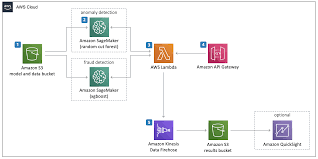Advancements in technology have played a significant role in improving fraud detection capabilities and preventing online fraud. Here are some notable advancements in fraud detection technologies:
- Artificial Intelligence (AI) and Machine Learning (ML): AI and ML algorithms have revolutionized fraud detection by enabling systems to analyze vast amounts of data and identify patterns indicative of fraudulent activities. These algorithms can learn from historical data to detect anomalies and predict potential fraud with high accuracy. They can adapt to evolving fraud patterns and detect previously unseen fraud techniques.
- Behavioral Analytics: Behavioral analytics technology analyzes user behavior to establish baseline patterns and detect deviations that may indicate fraudulent activity. It considers factors such as transaction history, navigation patterns, device information, and user preferences to build profiles and identify suspicious activities. Real-time monitoring and analysis of user behavior help identify anomalies and trigger alerts for further investigation.
- Biometric Authentication: Biometric authentication technologies, such as fingerprint recognition, facial recognition, and voice recognition, provide an additional layer of security in fraud prevention. Biometrics are difficult to forge, making them more reliable for user identification and authentication. These technologies help prevent account takeover fraud and unauthorized access by verifying the unique biological characteristics of individuals.
- Big Data Analytics: Fraud detection systems leverage big data analytics to process and analyze large volumes of data from various sources, including transactions, user behavior, social media, and external data feeds. By correlating and analyzing diverse data sets, patterns and indicators of fraud can be identified more accurately. Big data analytics also enable real-time fraud detection and predictive modeling.
- Network Analysis and Link Analysis: Network analysis tools examine the relationships and connections between entities, such as individuals, accounts, and devices, to identify complex fraud networks and suspicious linkages. By mapping these relationships, fraudsters can be identified based on their associations with known fraudulent entities. Network analysis helps uncover organized fraud rings, money laundering networks, and other sophisticated fraud schemes.
- Device Fingerprinting: Device fingerprinting technology analyzes unique attributes of devices, such as IP addresses, operating systems, browser configurations, and device identifiers, to create a digital fingerprint for each device. By comparing device fingerprints across multiple transactions, fraudsters can be identified even if they use different identities or accounts. Device fingerprinting helps detect fraudulent activities across multiple accounts or platforms.
- Real-Time Transaction Monitoring: Real-time transaction monitoring systems continuously monitor incoming transactions in real-time, applying predefined rules and algorithms to identify potentially fraudulent activities. These systems can flag suspicious transactions for manual review or automatically block transactions that meet predefined fraud criteria. Real-time monitoring helps prevent immediate financial losses and reduces the impact of fraud.
- Predictive Analytics: Predictive analytics uses historical data and statistical modeling techniques to predict future fraud risks and identify potential fraud scenarios. By analyzing patterns, trends, and risk factors, predictive analytics can proactively identify emerging fraud threats and allocate resources for prevention and mitigation activities accordingly.
- Blockchain Technology: Blockchain technology provides a decentralized and tamper-proof ledger that enhances transparency and security in transactions. It can be used to prevent fraud by ensuring the integrity and immutability of transaction records. Smart contracts on blockchain platforms can automate fraud detection and prevention measures, reducing the reliance on intermediaries and enhancing trust in transactions.
- Real-Time Data Feeds and Threat Intelligence: Integration with real-time data feeds and threat intelligence sources allows fraud detection systems to access up-to-date information about known fraudsters, compromised accounts, emerging fraud techniques, and other relevant threat indicators. This helps in real-time decision-making and enriches fraud detection capabilities.
By leveraging these advancements in fraud detection technologies, businesses and organizations can strengthen their preventive measures, detect fraud more accurately, and respond swiftly to emerging threats in the dynamic landscape of online fraud. It is crucial to continuously invest in research and development to stay ahead of fraudsters and adapt to their evolving tactics.
SHARE
